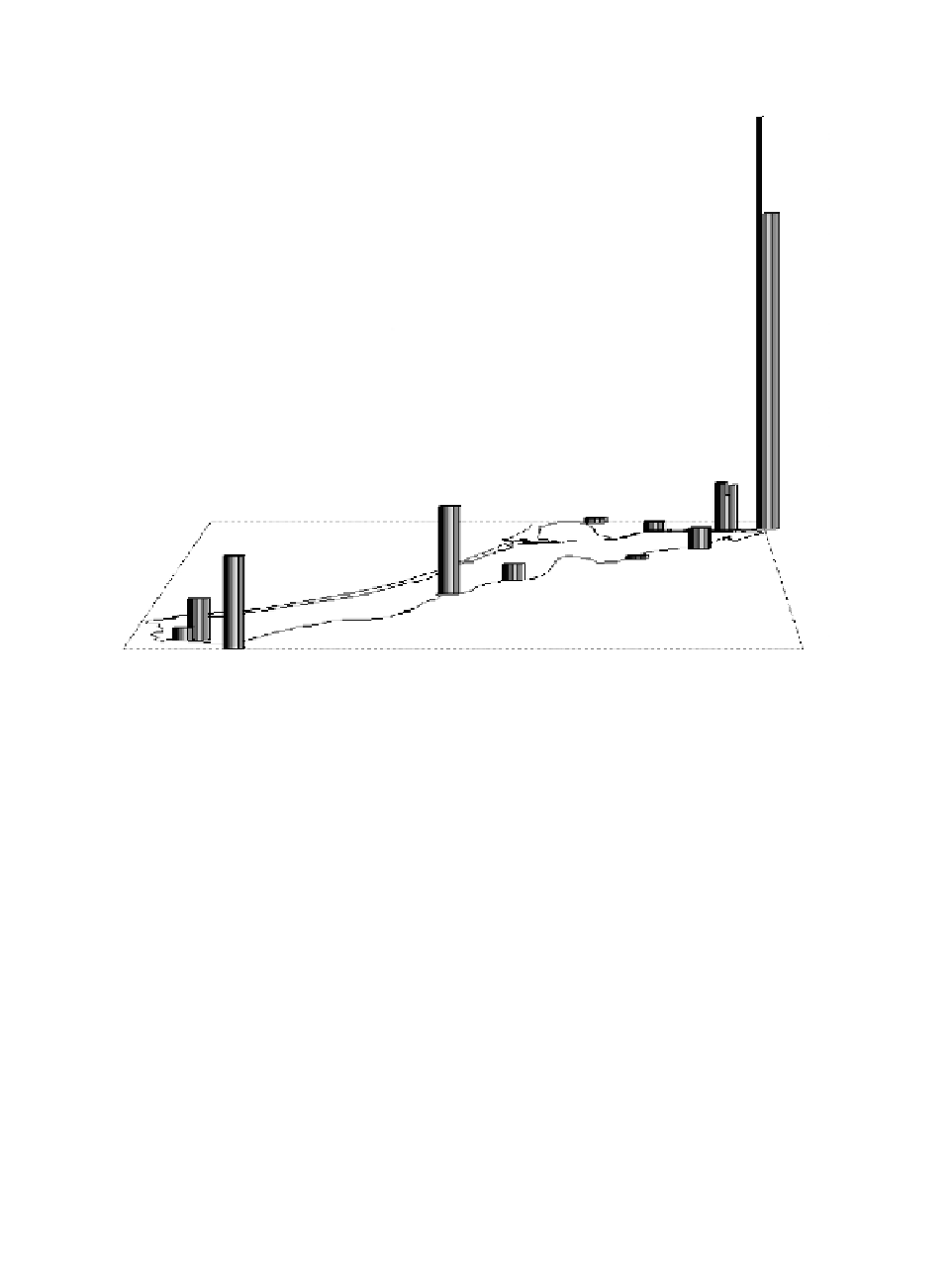Geoscience Reference
In-Depth Information
8962
6871
1043
1039
774
997
1704
123
161
423
1652
337
70
742
228
FIGURE 9.4.4
Distribution of the nitrogen loading (t
.
year
−1
) along the Vistula Lagoon coast
based on four scenarios considered by the international Danish-Polish-Russian project “The
Vistula Lagoon (1994-1997).”
The Kaliningrad hot spot can be divided into sources of untreated domestic and
smaller-scale industrial sewage, and loading from direct discharges by the two
existing paper mills into the Pregel River or those diverted to the existing outdated
treatment facility. The four alternative remedial plans (see Figure 9.4.4. for nitrogen
loading example) for reducing loading from hot spots in the Kaliningrad region
result in the following scenarios:
1.
Only the urban and industrial sewage presently discharged into the sewer
systems is conveyed to the wastewater treatment facility for primary
treatment, including chemical precipitation.
2.
This scenario represents the hypothetical “present situation” as if all present
urban and industrial sewage were collected and conveyed to the wastewater
treatment facilities. The paper mills operate with outmoded technology, but
the wastewater is conveyed to the wastewater treatment facilities. One of
the mills operates at 40% capacity while the other runs at 80% capacity.
3.
All urban and industrial sewage is collected and conveyed to the waste-
water treatment facilities. One of the paper and pulp mills is completely
renovated, introducing a new cleaner production technology resulting in
a 90% reduction in load. The second mill is closed.


















Search WWH ::

Custom Search